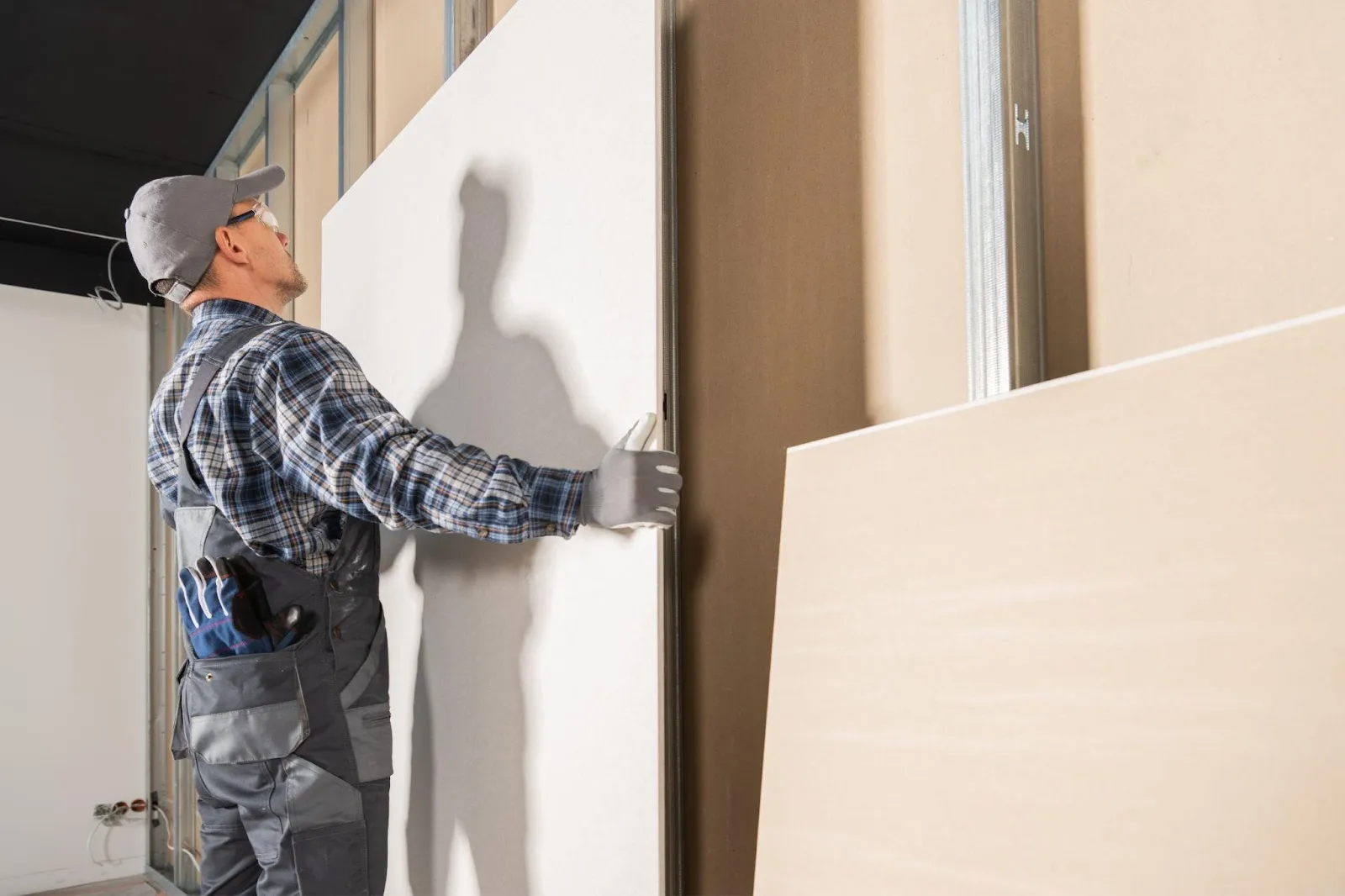
Winter-Ready Construction: How Proper Drywall Installation Prevents Cold Weather Damage
As the temperature drops across Ontario, construction projects face new challenges. Cold weather affects more than the comfort of crews—it impacts materials, timing, and long-term building performance. In cities like Cambridge, Guelph, and Kitchener, where winter can bring biting frost and unpredictable humidity, poorly installed drywall can lead to cracking, moisture buildup, and costly repairs down the line.
At Cambridge Drywall Services, we understand how to adapt installation methods to Ontario’s harsh winter conditions. Our team’s experience in both residential and large-scale commercial projects ensures every surface stands strong—no matter the season.
Why Cold Weather Construction Needs Special Attention
Winter construction doesn’t stop—it just requires smarter planning. When temperatures dip below freezing, building materials behave differently. Drywall, joint compound, and insulation are especially sensitive to changes in temperature and humidity.
Drywall that’s installed too soon, before the space is properly heated and ventilated, can warp or form cracks as it dries unevenly. The same happens if humidity levels spike during taping or mudding.
That’s why seasoned contractors in Cambridge take proactive measures long before the first panel goes up. At Cambridge Drywall Services, our teams coordinate with site managers to control climate conditions, ensuring stable temperatures during every phase—from framing to finishing.
Preventing Common Winter Drywall Problems
Winter drywall issues aren’t inevitable—they’re preventable. The key lies in preparation and process.
We focus on three main challenges:
- Temperature Control – Maintaining consistent interior temperatures above 10°C (50°F) helps drywall and joint compound set correctly. Temporary heat sources often keep the job site at ideal levels.
- Moisture Management – Proper ventilation prevents condensation buildup inside wall cavities. Moisture-resistant drywall, especially in basements or high-humidity areas, adds another layer of protection.
- Material Acclimatization – Allowing drywall sheets to adjust to room temperature before installation reduces expansion or contraction once mounted.
Each step, though small, protects the integrity of the wall system—avoiding future cracking, bubbling, or peeling.
Mid-Winter Maintenance: Protecting Your Investment
Even after installation, ongoing vigilance matters. During winter, buildings are sealed tight to keep warm air in, but that also traps humidity. When this happens, condensation can collect behind walls or near joints.
Regular inspections can catch early signs of damage. Look for soft spots, visible cracks, or discolouration. In commercial spaces, ensuring HVAC systems circulate dry, warm air evenly helps keep conditions stable.
If you suspect drywall damage, it’s best to call professionals familiar with local climates. Cambridge Drywall Services offers quick evaluations and repairs to prevent minor issues from growing into structural problems.
Frequently Asked Questions: Winter Drywall Concerns
Q1: Can drywall be installed in unheated buildings during winter?
Technically yes—but only with proper planning. We use controlled heat and moisture management systems to maintain ideal conditions during installation.
Q2: How long does drywall mud take to dry in cold weather?
It depends on humidity and airflow. Under controlled indoor temperatures, drying time stays consistent. In cold, damp conditions, it can double.
Q3: What drywall type works best for winter projects?
For commercial or residential spaces exposed to moisture, we recommend moisture-resistant or fire-rated drywall for long-term durability.
Q4: Can cold weather cause drywall cracking months later?
Yes, if the drywall was installed under unstable conditions. Controlled temperature during curing prevents future cracking.
Q5: What’s the best way to protect new drywall from frost or humidity?
Keep the building properly sealed and maintain consistent airflow using heaters and dehumidifiers during winter construction.
Advanced Winter Techniques Used by Cambridge Drywall Services
While many drywall contractors focus solely on materials, we emphasize conditions of performance. Winter work demands adaptability—every project site is different.
Our team uses advanced techniques such as:
- Heat-stabilized taping and mudding: Applying compounds designed for cooler environments.
- Moisture-barrier integration: Adding layers of vapor protection behind drywall in exterior-facing walls.
- Phase scheduling: Coordinating with other trades to complete insulation and sealing before interior drywall begins.
By combining precision craftsmanship with these smart techniques, Cambridge Drywall Services ensures every project in Cambridge or nearby cities stands up to the season’s toughest conditions.
Real-World Impact: Energy Efficiency and Longevity
Proper winter drywall installation isn’t just about avoiding cracks—it contributes to a more energy-efficient and comfortable building. Drywall acts as a thermal layer when installed and sealed correctly, reducing drafts and heat loss.
Over time, this means lower energy costs, fewer repairs, and improved occupant comfort. For commercial clients, it also translates into better tenant satisfaction and lower maintenance budgets—an important edge in competitive property markets like Cambridge and Waterloo.
Winter Construction Safety and Scheduling
Working through Ontario’s cold months requires extra attention to safety and timing. Snow, ice, and freezing equipment can all pose hazards. Crews must stay alert, and timelines must remain flexible.
To prevent costly delays, Cambridge Drywall Services creates detailed schedules that account for weather forecasts, site access, and material delivery. Our proactive project management ensures that no detail—no matter how small—slows down the build.
You can read more about our safety-first approach on our Health & Safety page.
Key Takeaways for Winter Drywall Success
- Stable temperature and humidity are critical from start to finish.
- Moisture-resistant drywall provides essential protection during cold months.
- Pre-installation acclimatization prevents cracking and uneven surfaces.
- Post-installation maintenance preserves strength and appearance.
- Partnering with experienced drywall professionals ensures consistency and compliance.
These principles form the foundation of every project Cambridge Drywall Services completes during Ontario’s winter season.
Get Your Project Winter-Ready
Don’t let cold weather slow down your construction timeline. With expert drywall installation and seasonal planning, your property can progress safely and efficiently year-round.
Contact Cambridge Drywall Services for a free quote today and discover how our winter-ready solutions can enhance your next project.
📞 Phone: (519) 624-1575
📧 Email: info@cambridgedrywall.com
🔗 Visit our Contact Page
